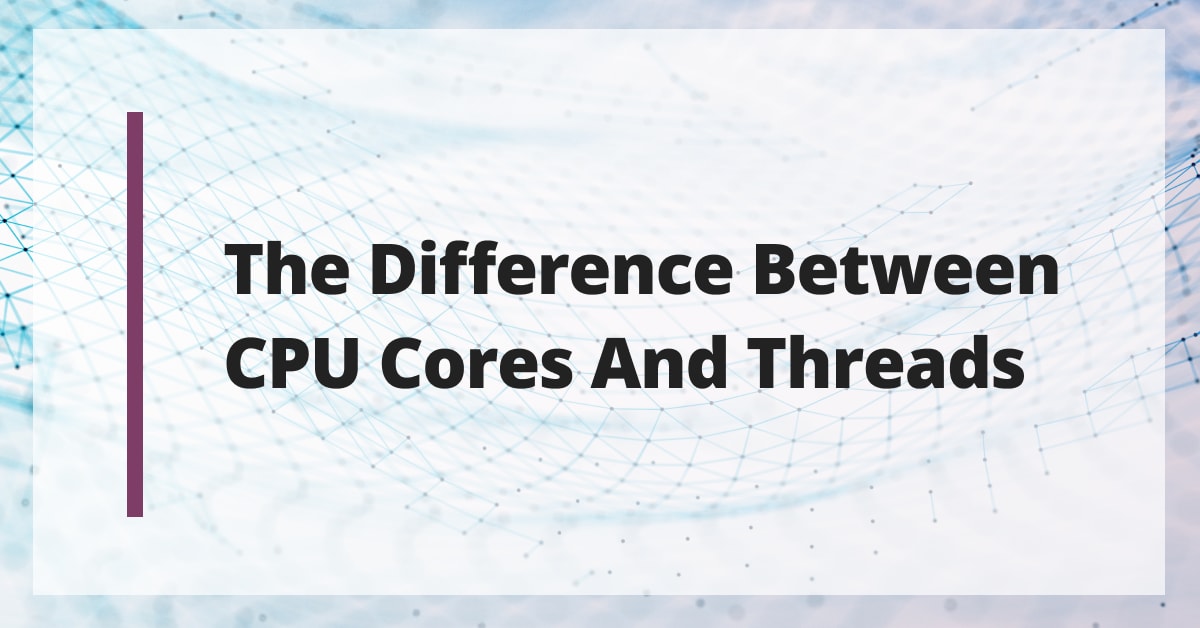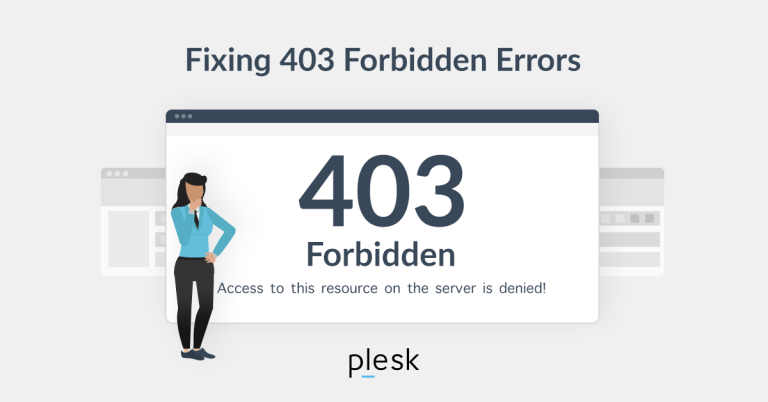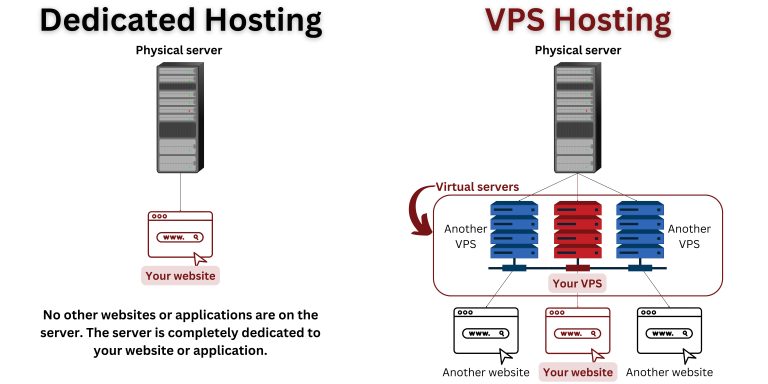
Whether you are a software developer or simply someone who relies on technology on a daily basis, getting the most out of your business investments is a priority. From infrastructure to hardware to software, every dollar that goes out should provide a demonstrable benefit and return on investment. If it does not, you may be moving in the wrong direction.
One place often overlooked when choosing technology? The right CPU for your needs. Perhaps decisions are made without an understanding of the role of the CPU. Maybe this detail seems an afterthought in the grand scheme of things.
Whatever the case, ignoring the utility and cost of the right CPU for your needs is a missed opportunity to maximize investments and outcomes in technology.
Why It Pays to Understand CPU Cores and Threads
Understanding the difference between cores and threads can help you make informed decisions about how to maximize performance. Let’s start with a few key concepts:
- Cores are physical processing units.
- Threads are virtual sequences of instructions given to a CPU.
- Multithreading allows for better utilization of available system resources by dividing tasks into separate threads and running them in parallel.
- Hyperthreading further increases performance by allowing processors to execute two threads concurrently.
With those four details in mind, examine the difference between CPU cores and threads so the next time you’re investing in infrastructure or hardware, you make the right decision for your business.
What Is a CPU?
A CPU (central processing unit) is essentially the brain that processes and carries out instructions. CPUs come in many different varieties, such as single-core, dual-core, quad-core, and multi-core processors. The more cores a processor has, the faster it can carry out tasks. This is often comparable to how a GPU works.
In addition to executing instructions from programs, the CPU also manages other components of the system like RAM (random access memory), HDD (hard disk drive), or SSD (solid-state drive). The CPU is responsible for coordinating and communicating with the other components. It’s important to choose the right CPU, depending on what types of tasks you plan to do.
Your CPU is likely to be different if you’re running applications and workflows vs storing archives and legacy files. CPUs vary widely in performance, power consumption, and cost. The activities the CPU performs will materially impact the right choice for your business needs and budget.
Understanding CPU Cores
The number of cores in a system will determine how many programs and tasks it can execute at once. For instance, a single-core processor may be able to handle one task at a time. By contrast, a quad-core processor could handle up to four simultaneous tasks. As the number of cores increases, so do processing speed and throughput.
Single-Core CPU
Single-core CPUs are cheaper than multi-core CPUs, and they consume less power. This makes them great options for laptops, tablets, and other mobile devices. They also work well if the tasks you need to complete are relatively simple or don’t require too much multitasking. On the other hand, they will lack the performance of a multi-core CPU.
Multi-Core CPU
A multi-core CPU is ideal for multitasking and running applications that require high levels of performance or processing large datasets. This type of processor can divide tasks among the cores, allowing each to handle its own piece. A multi-core CPU will require more energy and supporting hardware to support its power.
The Difference Between a Core and a CPU
So what exactly is the difference between a CPU and its cores? Well, it’s easy to think of the cores as the wheels of an automobile and the CPU as the vehicle. The wheels are essential to moving the vehicle, and this machine will need more wheels for added power and stability.
A CPU refers to the whole computer chip, while the number of cores present on a single CPU can vary. If you have ever bought a personal computer, you may have seen descriptions that include dual-core or quad-core, referring to two or four processing cores, respectively.
Understanding CPU Threads
A thread is a sequence of instructions given to the CPU by a program or application. The more threads a CPU can execute at once, the more tasks it can complete.
Threading in a CPU is a technique that can increase the speed and efficiency of multitasking. It enables multiple threads of execution to run simultaneously on one or more cores in a single processor, allowing for quicker response times and more efficient use of resources.
Threading is used in many different types of applications, including desktop software programs, web browsers, mobile apps, databases, and server-side software components. By using threads effectively, developers can create powerful solutions that make use of all available resources in a computer or network environment.
When multiple threads are running simultaneously, it’s called multithreading.
For example, if a user needs to perform complex calculations on a large set of data, then a single thread can spend more time on the calculation while other threads are available to handle other tasks. This helps ensure that all tasks are completed in an efficient manner with minimal impact on overall performance.
Modern processors support hyperthreading, a technology that allows one physical core to be divided into two virtual cores, thus allowing the CPU to work on multiple threads of execution simultaneously. This increases system performance by improving the utilization of available resources and increasing throughput.
Multithreading
Multithreading is a process during which a single processor executes multiple threads simultaneously. This allows the processor to divide tasks into separate threads and run them in parallel, thereby increasing the utilization of available system resources and improving performance.
Multithreading also helps reduce latency by allowing different processes to run in parallel rather than one at a time. It can also be used to help increase the number of tasks that can be executed in any given period of time.
Hyperthreading
Hyperthreading further increases the performance of multi-core processors by allowing them to execute two threads concurrently. The process works by sharing the resources of each core between two threads. That way, both can be active at the same time while accessing the same cache memory, registers, and execution units.
This allows the processor to take advantage of unused resources and improve performance. Hyperthreading can also result in higher power consumption than regular multithreading, as it requires more active cores to maintain operation.
The compounding effect of hyperthreading means that today’s CPUs can process an incredible number of tasks simultaneously.
The Difference Between Cores vs Threads
The main difference between cores and threads is that a core is an individual physical processing unit, while threads are virtual sequences of instructions.
The performance of a computer depends on the number of cores AND the threading technique. For example, a computer with a quad-core CPU will benefit from multithreading as it utilizes several cores. Meanwhile, a hyperthreading technique can further increase the number of threads that can be active by splitting a single core into two virtual cores, allowing them to run multiple threads.
The trade-off to such strength is that it often comes with a cost, consumes more power, and may only sometimes result in an overall improvement in performance. It’s critical to have comprehensive knowledge not only about the technical specifications of the CPUs you’re considering but also about how your organization will be using them.
Final Thoughts
Cores and threads are two important components of any modern computer system. Understanding their roles can help you get the most out of your machine. This helps you make informed decisions about how to best use your resources for maximum performance. For example, learning about the difference between cores and threads can be helpful when deciding how to upgrade or optimize your server’s processing power.
If you’re looking for more performance, investing in a multi-core processor with hyperthreading technology may be an option to consider. It can also help you decide whether you should invest in your own server or look for an appropriate partner to fit your business requirements.
A trusted partner like Liquid Web can help you determine which CPUs, number of cores, and threading architecture will provide the best return on investment and performance for your particular needs.
To learn more about what CPUs are the best choice for your infrastructure needs, contact the team at Liquid Web today. From a single VPS to a dedicated cloud deployment, our engineers can help design, deploy, and manage the infrastructure necessary to drive your business forward.





